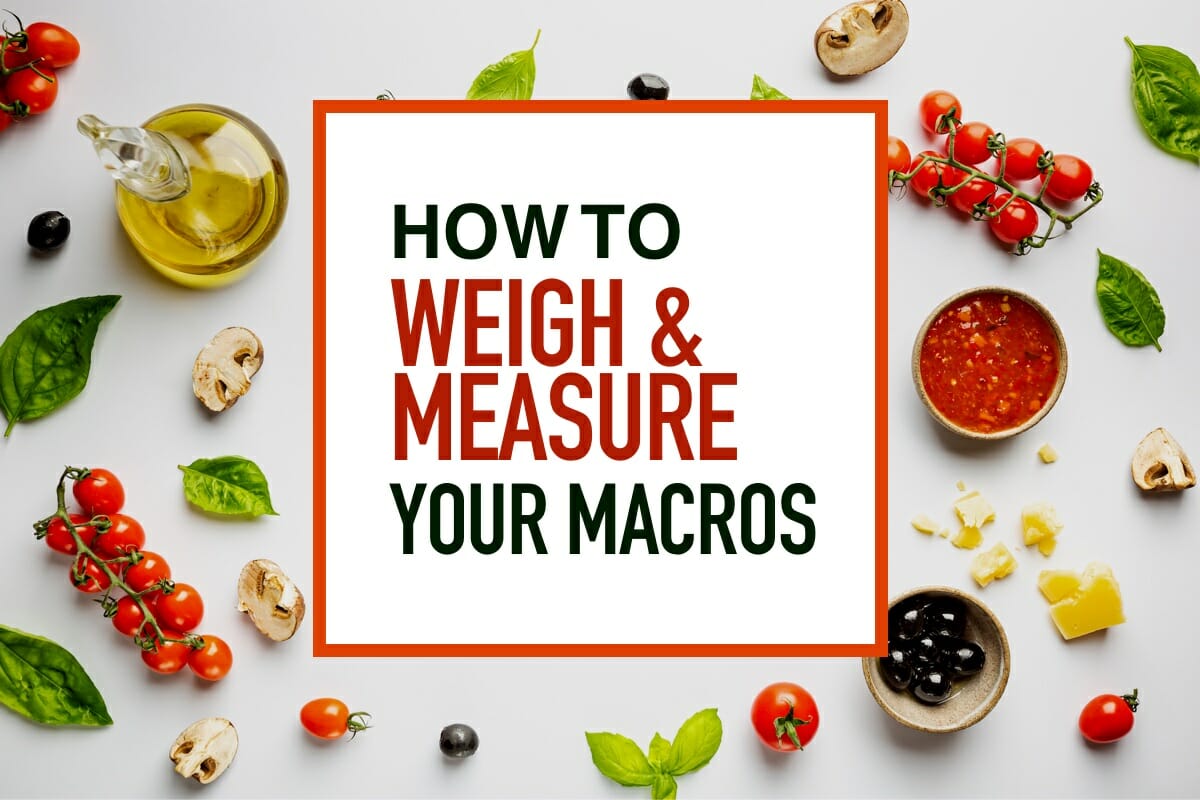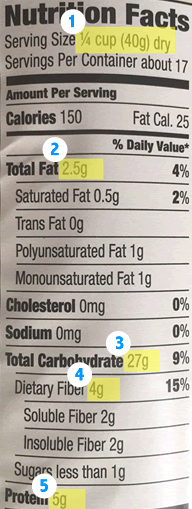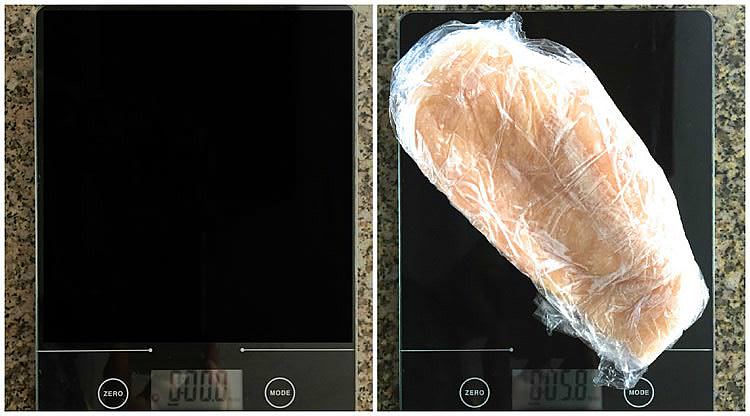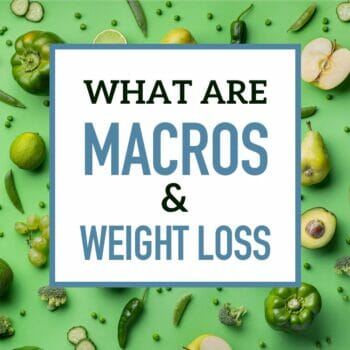How To Track Macros In the Foods You Eat Painlessly

What are macros?
Macros are the three macronutrients that provide energy and nutrition to your body.
- Protein: The tissue builder.
- Carbs: The activity fueler.
- Fat: The connector and energy storer.
The philosophy behind macro counting is the idea of flexible dieting.
Understanding how to calculate and adjust your daily macro goals is one of the most important aspects of a macro diet.
Once you’ve figured out your TDEE and macros, it’s time to start keeping track of the macros in what you eat, whether you want to lose weight or reach some other fitness goal.
Tracking macros for beginners
There are three ways to determine the macro content of food.
- Use nutritional food labels.
- Use a digital food scale to calculate macros.
- Use a macro-tracking app to tally daily macros.
Combining all three ways will give you the best chance of success.
How to track macros using nutritional labels

Almost all foods sold in grocery stores have food labels except fresh produce.
However, some bulk stores have much of their produce bagged and nutritionally labeled.
There are five items to locate on the food’s label.
- Serving size
If you eat more than one serving, multiply all your macros by the number you eat. - Total Fat
- Total Carbs
You can subtract the fiber grams from this amount to get your Net Carbs. - Fiber
- Protein
Example
In the sample label, we find:
Per 1/4 cup serving, we get 2.5 grams of fat, 23 net carbs, and 5 grams of protein.
You can track fiber if you wish – most nutritionists recommend an intake of 18–38 g of fiber per day for adults.
Record this information in a food journal or enter it into a food tracking app.
What are net carbs?
Net carbs are the carbohydrates in a food that can be digested and absorbed by the body.
Fiber is not digested and absorbed, so it is not included in the net carb count.
Some people track net carbs for accuracy, but for beginners, tracking total carbohydrates is easier.
Remember to do this with every food you eat during a particular day.
There are some exceptions:
- Prepared meals will already have the macro amounts of ALL ingredients listed on the label.
- Some foods may list the serving size in ounces or grams.
- Some foods (such as meats and vegetables) may not have any macro information listed at all. If this is the case, you’ll need to use a digital food scale.
How to weigh food and use a food scale to track macros
With a digital food scale, you can weigh food to find out how much of a certain macronutrient is in it.
However, the scale will not tell you macro amounts unless you buy a more advanced one like the Greater Goods scale.

Greater Goods Scales
Has an LCD screen that shows macros of a food.
Accompanying app must be used.
If you have basic scales, here’s how to measure macros.
- Turn the scale on and set it to ounces or grams (USA versions default to ounces).
- Make sure the scale reads 00.00 and place the food on the scale.
- You may also use a plate or bowl, but you must place the bowl on the scale first and then hit the zero button.
You can then fill the bowl or plate with the food item. - When the number stabilizes, record the amount.
- Use a food database like Calorieking.com to then figure out the macros.
Example:

Here we have a piece of chicken that weighs 5.8 ounces raw.
Search the database for raw, skinless chicken breast. Then change the serving to 5.8 oz.

From this, you learn that the chicken breast has 0 g of carbs, 2 g of fat, 38 g of protein, and 0 g of fiber. Record this in your food diary or log.
Do you weigh food raw or cooked for macros?
Always weigh food raw.
Meats and vegetables consist of a lot of water weight, and this weight will change during cooking.
Do I weigh rice or oats cooked or uncooked?
You almost always weigh the dry ingredient first, but it depends on what reference database or recipe you are using.
Most will say, “half a cup of rice, dry.”
Should I weigh my food in grams or ounces?
In the USA, foods are weighed in ounces, but nutrition databases (and our macro calculator) always list macros in grams. In all databases, you can choose your unit of weight.
How to track macros with an app
There are many macro tracking apps, and MyFitnessPal (MFP) is one of the most popular.
If you opt to use MyFitnessPal, see the tutorial on how to set it all up.
Apps have three methods for finding a food’s macros:
- Scan an item’s barcode with your phone’s camera.
- Search the app’s food database.
- Manually enter the food’s macros from a nutrition label.
With most apps, you only need to enter the food once. From then on, the app will learn.
A macro app will track macros for you
Once you enter foods, the app keeps a running total of your calories and macros for the day. You can quickly find out how much of each macro you have remaining.
Finding and keeping track of your macros may seem daunting at first, but the more you do it, the easier it becomes.
Accelerate Your Diet and Fitness Goals with My Macro Solution System
Step-by-step self-guided program -or- fully customized personal macros coaching. Feel exhilarated as you conquer your goals!
MACRO COUNTING
- 130 page step-by-step guide.
- Achieve fat loss without starvation.
- Individually tailored to your body composition.
References
- Ioniță-Mîndrican, C. B., Ziani, K., Mititelu, M., Oprea, E., Neacșu, S. M., Moroșan, E., ... & Negrei, C. (2022). Therapeutic Benefits and Dietary Restrictions of Fiber Intake: A State of the Art Review. Nutrients, 14(13), 2641.
- Yannakoulia, M., Yiannakouris, N., Blüher, S., Matalas, A. L., Klimis-Zacas, D., & Mantzoros, C. S. (2003). Body fat mass and macronutrient intake in relation to circulating soluble leptin receptor, free leptin index, adiponectin, and resistin concentrations in healthy humans. The Journal of Clinical Endocrinology & Metabolism, 88(4), 1730-1736

 What Are Macros For Weight Loss?
What Are Macros For Weight Loss? How to Calculate Your Macros for Body Transformation
How to Calculate Your Macros for Body Transformation Drinking Alcohol and Counting Macros
Drinking Alcohol and Counting Macros Help, I’m Hungry on a Macros Diet
Help, I’m Hungry on a Macros Diet How To Track Macros In the Foods You Eat Painlessly
How To Track Macros In the Foods You Eat Painlessly